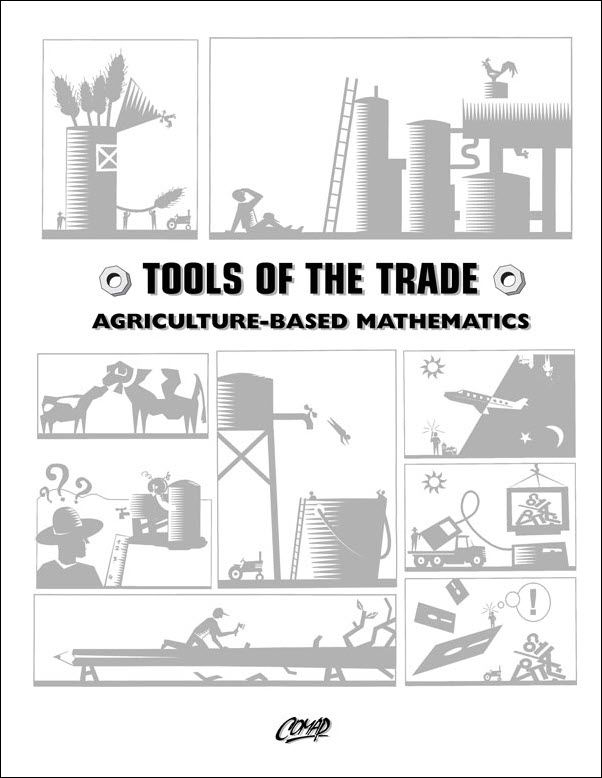Tools of the Trade: Unit 6: Growing Degree Days
Author: Project Co-Directors: Dave Engelhard, Michael Kallaher & Jack Robertson
Unit 6: Growing Degree Days: Purpose of Unit:
To introduce students to the concept of growing degree days and do some related arithmetic computations. The unit is designed to reinforce basic arithmetic skills in a simple problem solving setting. Exercises are appropriate for calculator use.
Note: The information below was created with the assistance of AI.
Level of Mathematics
Target Audience:
Middle school students (Grades 6–8) and introductory high school science or agriculture classes.
Requires basic arithmetic, familiarity with averages, and temperature units.
Mathematics Involved:
Averaging (arithmetic mean of daily high and low temperatures)
Subtraction from a constant (freezing point)
Unit conversions (Fahrenheit to Celsius)
Simple algebraic reasoning (e.g., solving for a missing temperature)
No negative numbers in final outputs, reinforcing real-world constraints in modeling
Application Areas
Primary Context:
Agricultural science, particularly:
Plant development
Climate adaptation
Crop management
Practical Applications:
Estimating plant maturity timing based on accumulated heat units.
Understanding regional suitability for crops.
Comparing heating vs. growing degree days.
Relating temperature data from public sources (e.g., newspapers, utility bills) to biological growth indicators.
Prerequisites
Required Skills:
Basic arithmetic operations
Concept of average (mean)
Familiarity with temperature scales (Fahrenheit and Celsius)
Introductory proportional reasoning and unit conversions:
Converting between F° and C°
Understanding the basis of GDD:
(High + Low)/2−Base temperature
(High + Low)/2−Base temperature
Recommended Preceding Units:
Unit Conversions (Unit 1) provides a useful foundation.
This unit is the basis for follow-ups: Units 7 & 8.
Subject Matter
Key Topics Covered:
Definition of Growing Degree Days (GDD):
A measure of cumulative heat for plant development.
Computed by subtracting the base temperature (32°F or 0°C) from the average daily temperature.
Worked Examples:
High/low temperature-based GDD calculations.
Temperature interpretation from GDD values.
Weekly and seasonal accumulation estimates.
Applications to Agriculture:
Maturity of spring wheat and corn varieties.
Comparisons between Fahrenheit and Celsius GDD values.
Exploration of Heating Degree Days (HDD) and their inverse relationship to GDD.
Critical Reasoning Questions:
Can GDD(C) exceed GDD(F)? (No)
Importance of using proper rounding and whole-number temperature data.
Real-world interpretation of newspaper data and climate impact.
Assessment Exercises:
Multi-day GDD totals
Reverse-engineering temperatures from given GDD values
Total GDD required for crop maturity based on seasonal averages
Correlation to Mathematics Standards
Common Core State Standards (CCSS) Alignment:
6.SP.B.5: Summarize numerical data sets in real-world contexts.
6.RP.A.3: Use ratio and rate reasoning to solve real-world problems.
7.EE.B.3: Solve multi-step real-life and mathematical problems with positive/negative rational numbers.
7.NS.A.3: Apply arithmetic with rational numbers in real-world settings.
8.EE.C.7: Solve linear equations (applies when solving for unknown temperatures).
Next Generation Science Standards (NGSS) Cross-Connections:
MS-LS1-5: Construct a scientific explanation based on evidence for how environmental and genetic factors influence the growth of organisms.
HS-ESS3-1: Analyze and interpret data to understand relationships among natural phenomena (e.g., temperature and crop growth).

Mathematics Topics:
Application Areas:
Prerequisites:
You must have a Full Membership to download this resource.
If you're already a member, login here.